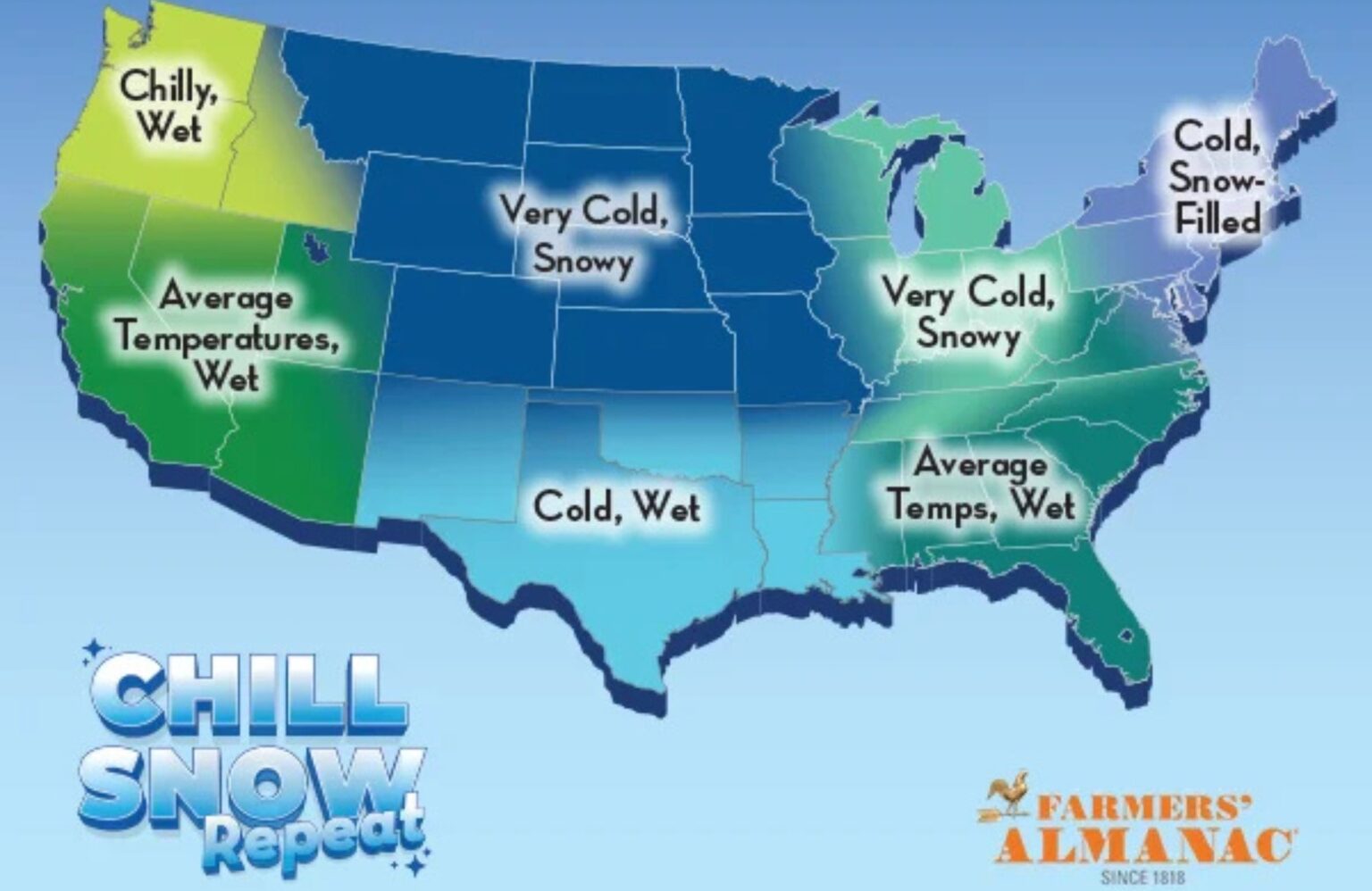Subscribe to Updates
Get the latest agriculture news and updates directly to your inbox.
Author: staff
We bring you some of the best farm photos from the week this Friday, November 7, 2025! Want to get listed in this weekly feature? Be sure to hashtag your Instagram pics with #agdaily. View this post on Instagram A post shared by Hungry for Truth (@hungryfortruthsd) View this post on Instagram A post shared by Denise T: Ranchin’ w/Vinnie (@denise4js) View this post on Instagram A post shared by Jessica Heiden (@jessheiden) View this post on Instagram A post shared by Oobree Farms (@oobree_farms) View this post on Instagram A post shared by Rodey and Brooke Wilson (@wilsoncattle_) View…
The November USDA World Agricultural Supply and Demand Estimates (WASDE) has been rescheduled for release from Monday, Nov. 10, to Friday, Nov. 14. This will be the first update to U.S. and global supplies since Sept. 12. Here is what farmers need to know about the U.S. corn, soybean, and wheat markets, and what Grain Market Insider will be looking for in the updated balance sheets. Private estimates for the October WASDE had corn ending stocks increasing from 2.110 billion bushels in September to 2.231 billion, soybean ending stocks unchanged at 300 million bushels, and wheat ending stocks increasing from…
If you’ve been scrolling TikTok lately, you may have noticed something strange trending. Brass bull rings — yes, the ones meant for actual bulls — are flying off the shelves. But it’s not a surge in livestock management. It’s a new fashion movement, marked with #bullring. And it has farmers and ranchers everywhere either laughing, groaning, or double-checking their supply orders. Creators such as jade_pebworth have posted videos showing how to turn a 3-inch brass bull ring into a stamped, polished bangle bracelet. The result? A rustic piece of jewelry, that’s meant to turn heads (cattle, that is). @jade_pebworth Part…
December corn ended the day and the week in the red. For the day, the contract closed down 1½¢ at $4.27¼ per bushel. For the week, the contract was down 4¼¢. January soybeans ended the day and week in the green. For the day, the contract closed up 9½¢ at $11.17 per bushel. Week-over-week, the contract was up 1¾¢. December CBOT wheat ended the day down 7¾¢ at $5.27¾ per bushel. December KC wheat was down 3¢ at $5.19¼ per bushel. December Minneapolis wheat was up a penny at $5.58. Week-over-week, December CBOT and KC wheat were lower, while December…
Tar spot once again spread throughout the top corn-producing states in the U.S. this growing season. Looking back over the season, 13 of the top 18 corn-growing states confirmed tar spot infections by August. North Dakota has since been added to the list, leaving Colorado, North Carolina, Tennessee, and Texas as the only top corn states not reporting cases. Below is a map from the Crop Protection Network showing end-of-season data for the 2025 growing season. States With Confirmed Tar Spot Cases: IllinoisIndianaIowaKansasKentuckyMichiganMinnesotaMissouriNebraskaNorth DakotaOhioPennsylvaniaSouth DakotaWisconsin Yield Losses and 2026 Plans In South Dakota, Madaline Shires, South Dakota State University Extension…
The Farmers’ Almanac, one of America’s oldest and most beloved publications, will close after more than two centuries in print. In a message shared on Thursday, editors Sandi Duncan and Peter Geiger expressed deep appreciation to generations of readers who have relied on the Almanac’s distinctive mix of “weather, wit, and wisdom” since its founding in 1818. The 2026 edition, its 208th issue, will be the publication’s final issue. For countless households, the Farmers’ Almanac was a trusted companion on the kitchen counter or in the barn, offering planting guides based on Moon phases, best days for everyday tasks, and…
By Richard Valdmanis Nov. 7 (Reuters) – The Environmental Protection Agency said on Friday it approved 14 requests from small refineries for full or partial exemptions to the nation’s biofuel blending mandates, drawing criticism from a top U.S. biofuel trade group. The decisions effectively clear the remainder of the agency’s huge backlog of such requests that had built up under former President Joe Biden’s administration. The EPA had approved 140 petitions in part or in full earlier this year, and denied just 28, leaving just a handful from previous years remaining under review. Under the Renewable Fuel Standard, refiners are required to blend billions of gallons of ethanol…
By Maximilian Heath BUENOS AIRES, Nov. 6 (Reuters) – Argentine farmers began planting their fields with soy for the 2025/26 season in recent days, the Buenos Aires grains exchange said on Thursday, noting most fields benefited from “optimal” surface moisture conditions. Argentina is the world’s largest exporter of soybean oil and meal, and the exchange expects this season to yield some 48.5 million metric tons of crop. Farmers have planted 4.4% of the 17.6 million hectares it expects will be sown with soy, it added. Corn farmers are waiting for optimal conditions to begin planting the late-maturing crop for the 2025/26 season,…
By Todd Hubbs and Scott Irwin The U.S. Environmental Protection Agency (EPA) released a trilogy of decisions for the U.S. Renewable Fuel Standard (RFS) in recent months that represents some of the most significant regulatory developments for biomass-based diesel in the program’s history. The vast majority of biomass-based diesel produced in the U.S. and used to comply with the RFS is made up of FAME biodiesel and renewable diesel (farmdoc daily, Feb. 8, 2023). The combined effect of higher renewable volume obligations (RVOs), more restrictive small refinery exemptions, and mandatory reallocation creates substantially higher biomass-based diesel requirements for 2026-2027 (farmdoc daily, Oct. 25, 2025). This…
By Julie Ingwersen CHICAGO, Nov. 5 (Reuters) – The U.S. Department of Agriculture is collecting survey-based data for its upcoming crop production report scheduled for release on November 14, an official with the agency’s statistical arm said on Wednesday, despite the ongoing U.S. government shutdown. The report will include the government’s first updated estimates of U.S. corn and soybean yield and production since September 12, when most of the Midwestern harvest was not yet underway. The October crop report was not issued due to the shutdown. The USDA’s reports are closely monitored by grain traders globally. Along with corn and soybeans, the upcoming…








:max_bytes(150000):strip_icc()/100884485_farm_grain_bin_silo-b7f811c88bdf4f078a84d89af363ddd5.jpg)

:max_bytes(150000):strip_icc()/Markets-3-Soybeans-field-up-15-d7bb49aa885c410c882b187195cc5066.jpeg)
:max_bytes(150000):strip_icc()/Screenshot2025-07-07at4.10.52PM-9661e4757040401791a783fd6ba11d41.png)

:max_bytes(150000):strip_icc()/SOPAImagesContributor-1061927546-9dadfd851fa2415d8703de62e8141ab8.jpg)
:max_bytes(150000):strip_icc()/BryanJorgensesn-HowtoSelectBetterSeedVarieties-R5A_7202-018_corn-18395d25ece14bdab859bff3992ebbeb.jpg)
:max_bytes(150000):strip_icc()/Iowa-ethanol-plant-d2b1fd50b97640698c7241cf6814f221.jpg)
:max_bytes(150000):strip_icc()/2210-08-096_wheat-f2aff7062b69433ab8ef6361993a9436.jpg)